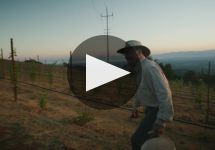Ridge Lytton Springs Red Blend 2017
-
Tasting
Panel -
Wilfred
Wong -
Robert
Parker -
Jeb
Dunnuck



Product Details
Your Rating
Somm Note
Winemaker Notes
Blend: 74% Zinfandel, 15% Petite Sirah, 9% Carignane, 2% Mataro
Professional Ratings
-
Tasting Panel
Vibrant cherry color with a bright berry nose; velvety with sweet new oak and lovely spice. Ripe blackberry joins deep, resonant flavors of spice in this blend of 74% Zinfandel, 15% Petite Sirah, 9% Carignane, and 2% Mataro.
-
Wilfred Wong of Wine.com
COMMENTARY: The 2017 Ridge Lytton Springs is bright and active on the palate. TASTING NOTES: This wine exhibits attractive and aromatic red fruits. Enjoy is palate richness and zesty finish with a mildly-season Porchetta. (Tasted: January 30, 2020, San Francisco, CA)
-
Robert Parker's Wine Advocate
The 2017 Lytton Springs is made up of 74% Zinfandel, 15% Petite Sirah, 9% Carignane and 2% Mataro. It aged in 100% air-dried American oak, 10% new. Medium ruby-purple, it opens with dried flowers, autumn leaves and cinnamon stick notions over a core of crushed red cherries, dried cranberries, apricot, underbrush, red currant and black cherries with a super spicy undercurrent. The palate is medium-bodied, spicy and fresh with a grainy frame and juicy freshness, finishing long and lifted.
-
Jeb Dunnuck
The 2017 Lytton Springs is a step back from the incredible 2016 yet still has plenty to love. A blend of 74% Zinfandel, 15% Petite Sirah, and the rest Carignan, it offers a plummy, spice-filled effort that has medium-bodied richness, a bright spine of acidity, a sappy floral character, and a balanced, clean finish. Drink it over the coming decade.
Other Vintages
2022-
Wilfred
Wong -
Wine
Enthusiast -
James
Suckling - Decanter
-
Wine
Spectator - Vinous
-
Robert
Parker
- Vinous
-
Wilfred
Wong -
Wine
Spectator -
Jeb
Dunnuck
-
Wine
Enthusiast -
James
Suckling - Decanter
-
Wilfred
Wong -
Wine
Spectator - Vinous
-
Wine &
Spirits
-
Wilfred
Wong -
Jeb
Dunnuck -
Wine
Enthusiast -
Connoisseurs'
Guide - Vinous
-
Wine
Spectator
-
Robert
Parker -
Wilfred
Wong -
Wine
Enthusiast -
Jeb
Dunnuck
-
James
Suckling -
Jeb
Dunnuck -
Robert
Parker -
Wine
Spectator -
Wine &
Spirits
-
Connoisseurs'
Guide -
Jeb
Dunnuck -
Wilfred
Wong -
Wine
Spectator
-
Wilfred
Wong -
Robert
Parker
-
Tasting
Panel -
Wilfred
Wong -
Robert
Parker -
Wine
Spectator
-
Wilfred
Wong -
Connoisseurs'
Guide
-
Tasting
Panel
-
Robert
Parker
-
Connoisseurs'
Guide -
Wilfred
Wong -
Robert
Parker -
Wine &
Spirits -
Wine
Spectator
-
Wine
Spectator -
Connoisseurs'
Guide -
Jeb
Dunnuck -
Robert
Parker
-
Robert
Parker -
Wine &
Spirits -
Connoisseurs'
Guide
-
Wine &
Spirits -
Robert
Parker
-
Robert
Parker
-
Wine
Spectator -
Robert
Parker

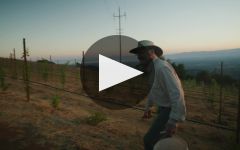
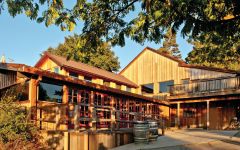
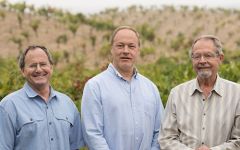
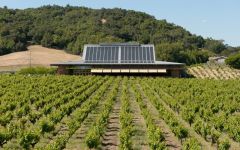
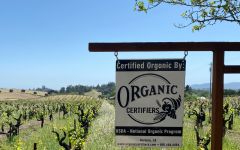
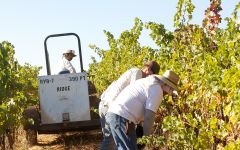
RIDGE's history begins in 1885, when Osea Perrone, a doctor and prominent member of San Francisco's Italian community, bought 180 acres near the top of Monte Bello Ridge in the Santa Cruz Mountains. He planted vineyards and constructed a winery of redwood and native limestone in time to produce the first vintage of Monte Bello in 1892. The historic building now serves as the RIDGE production facility.
In 1962, Ridge Vineyards made its first Monte Bello, and two years later its first zinfandel. The RIDGE approach is straightforward: find the most intense and flavorful grapes, guide the natural process, draw all the fruit's richness into the wine. Decisions on when to pick, when to press, when to rack, what varietals and what parcels to include and when to bottle, are based on taste. To retain the nuances that increase complexity, Ridge winemakers handle the grapes and wine as gently as possible. There are no recipes, only attention and sensitivity.
In August 2021, Ridge Vineyards joined International Wineries for Climate Action (IWCA), a group of like-minded wineries that are dedicated to decarbonizing the global wine industry. RIDGE is committed to achieving Net Zero by 2050 and completes a biannual greenhouse gas audit utilizing the World Resources Institute Greenhouse Gas (GHG) Protocol methodology and be verified by an internationally accredited, third-party auditor.

With hundreds of red grape varieties to choose from, winemakers have the freedom to create a virtually endless assortment of blended red wines. In many European regions, strict laws are in place determining the set of varieties that may be used, but in the New World, experimentation is permitted and encouraged resulting in a wide variety of red wine styles. Blending can be utilized to enhance balance or create complexity, lending different layers of flavors and aromas. For example, a red wine blend variety that creates a fruity and full-bodied wine would do well combined with one that is naturally high in acidity and tannins. Sometimes small amounts of a particular variety are added to boost color or aromatics. Blending can take place before or after fermentation, with the latter, more popular option giving more control to the winemaker over the final qualities of the wine.
How to Serve Red Wine
A common piece of advice is to serve red wine at “room temperature,” but this suggestion is imprecise. After all, room temperature in January is likely to be quite different than in August, even considering the possible effect of central heating and air conditioning systems. The proper temperature to aim for is 55° F to 60° F for lighter-bodied reds and 60° F to 65° F for fuller-bodied wines.
How Long Does Red Wine Last?
Once opened and re-corked, a bottle stored in a cool, dark environment (like your fridge) will stay fresh and nicely drinkable for a day or two. There are products available that can extend that period by a couple of days. As for unopened bottles, optimal storage means keeping them on their sides in a moderately humid environment at about 57° F. Red wines stored in this manner will stay good – and possibly improve – for anywhere from one year to multiple decades. Assessing how long to hold on to a bottle is a complicated science. If you are planning long-term storage of your reds, seek the advice of a wine professional.

A multifaceted and highly reputable sub-region of Sonoma, Dry Creek Valley is responsible for a wide range of wine styles—both red and white. One of the smallest AVAs in California, Dry Creek Valley has a winning combination of ideal geography and climate. Fertile, well-drained soils create concentrated varietal character while long, warm days, bookended by cool nights, allow grapes to reach full phenolic ripeness and balance. The warm and welcoming appellation is home to a number of family-owned vineyards and wineries that place a strong emphasis on sustainable farming practices.
Zinfandel reigns supreme here and still produces in a great number of very old vineyards—often 100 years old or older. These old vines create a powerful, voluptuous and sultry wine unlike those of any other region. Sauvignon Blanc, the valley’s signature white grape, also performs exceptionally well. Many other varieties grow comfortably here, including Cabernet Sauvignon, Grenache and Syrah. Petite Sirah is often found in blends with Zinfandel.
